Mold on Soil
Ever noticed any white, fuzzy appearance or brown powdery mildew on the surface of your houseplant soil? It is a clear indication that you have mold on the soil.
Whether it is a loam-based compost, houseplant compost, or multipurpose compost, soil plays a significant role in the survival and growth of your plants. But when fungus starts growing on your soil, this can be a concern.
Considering your expenses and efforts to keep those plants can even make you anxious. You are not alone in this. We have practical experience of mold on different soil.
If you are unsure whether your soil is moldy, keep reading to unveil what you should know about mold on plant soil. You will also learn its preventive measures and how to get rid of the fungus.
Contents
- What is Mold on Soil?
- What Causes Mold Growth on Plant Soil?
- What Type of Mold Can Grow on Plant Soil?
- What Does Mold on Soil Looks Like?
- Is Mold Dangerous on Your Soil?
- The Harmful Effects of Mold on Your Soil and Plant
- How to Identify Mold on Plant Soil
- How to Prevent Mold Growth on Soil
- How to Get Rid of Mold on Soil
- Frequently Asked Questions (FAQs)
What is Mold on Soil?
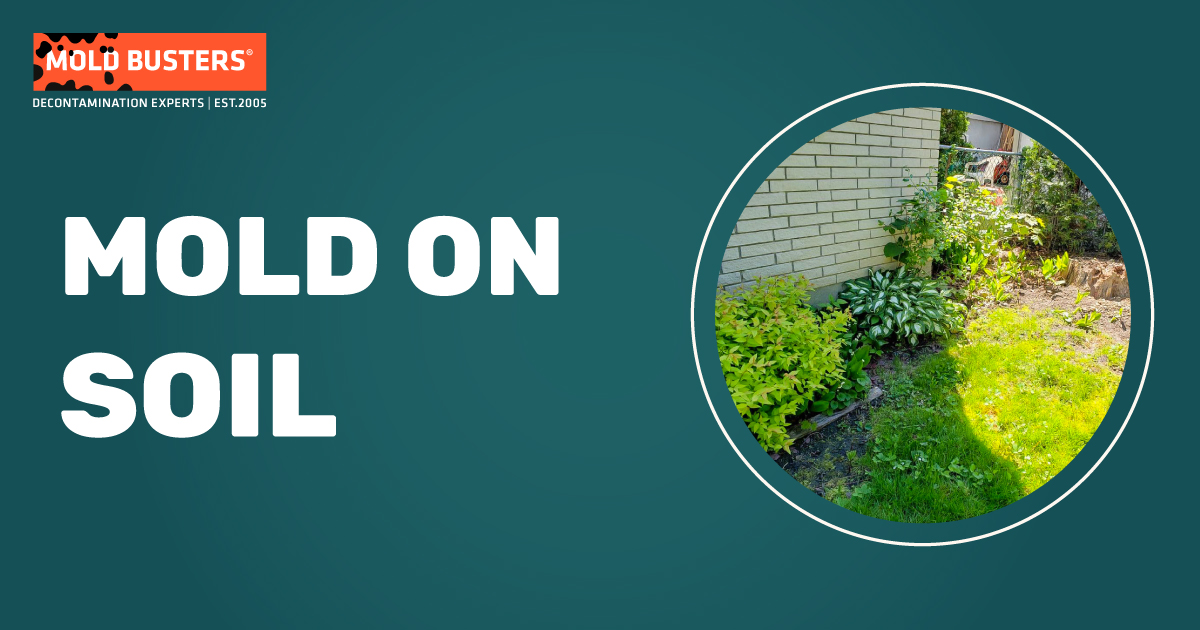
Mold on soil means mold fungus growing on your houseplant soil. It usually has a white woolly or snowdrifts appearance. Mold grows in a confined area at its early www but, when left unnoticed, its spores spread over the soil. Only a few mold types are visible when others are unsightly.
Typically, your soil needs fungi to break down its components into nutrients needed for plants to grow. Fungi are essential for the growth of plants, but not all fungi are good. Pathogenic is one of the species of fungi that can cause disease in houseplants and humans.
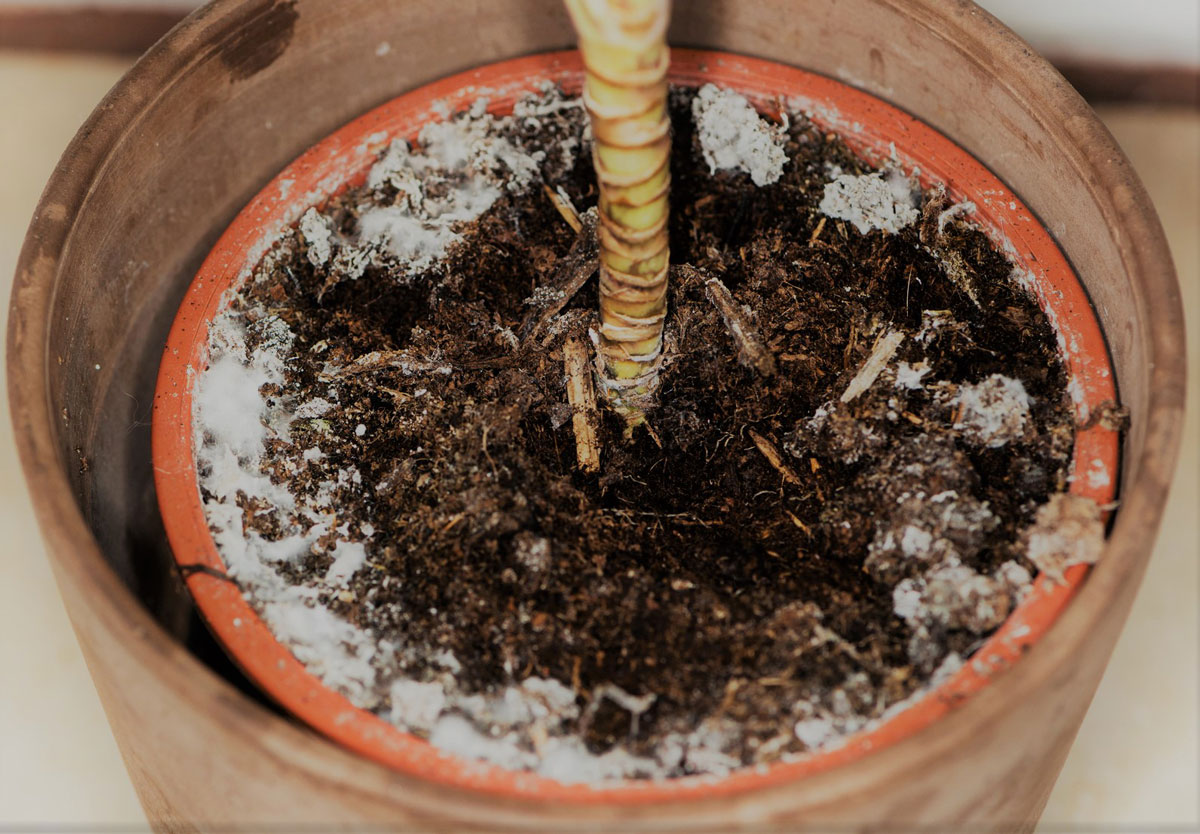
Mold is one of the fungi essential for the growth of your houseplants. But there is nothing to worry about if it’s not surfacing on your soil. However, it raises concerns when it is becoming noticeable.
What Causes Mold Growth on Plant Soil?
The factors fueling mold growth are moisture, food source, and temperature. The presence of any or all of these three factors will instantly encourage mold growth.
Let’s dive deeper to see how these factors affect different plant soil.
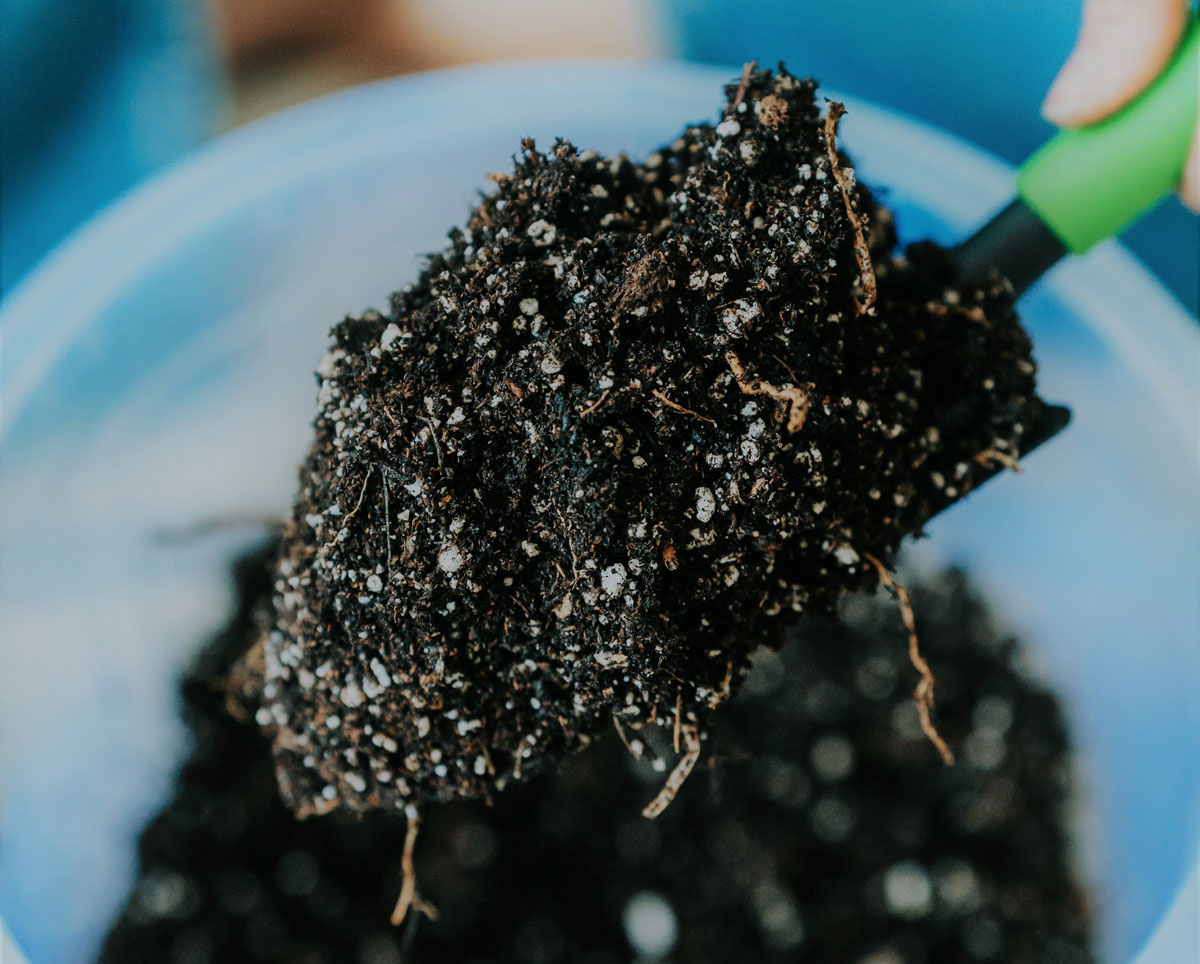
Indoor Plant Soil
The mold you see in your indoor plant soil, including potted plant soil, potting soil bag, orchid soil, and bonsai tree soil, is caused by:
- High humidity
- Using long-abandoned or unhygienic potting soil
- Poor drainage system
- Overwatering the plants
The soil becomes damp at high temperatures, creating a food source for mold. As such, the fungi spores grow and spread in the plant soil. Additionally, excessive anaerobic conditions (low airflow) can also make your indoor potting soil get moldy.
The absence of sunlight is another reason why you see mold in your indoor houseplant soil. When the soil does not get enough sunlight (needed to provide nutrients for the plant), it gets constantly wet. The moisture then promotes the growth of mold.
Outdoor Plant Soil
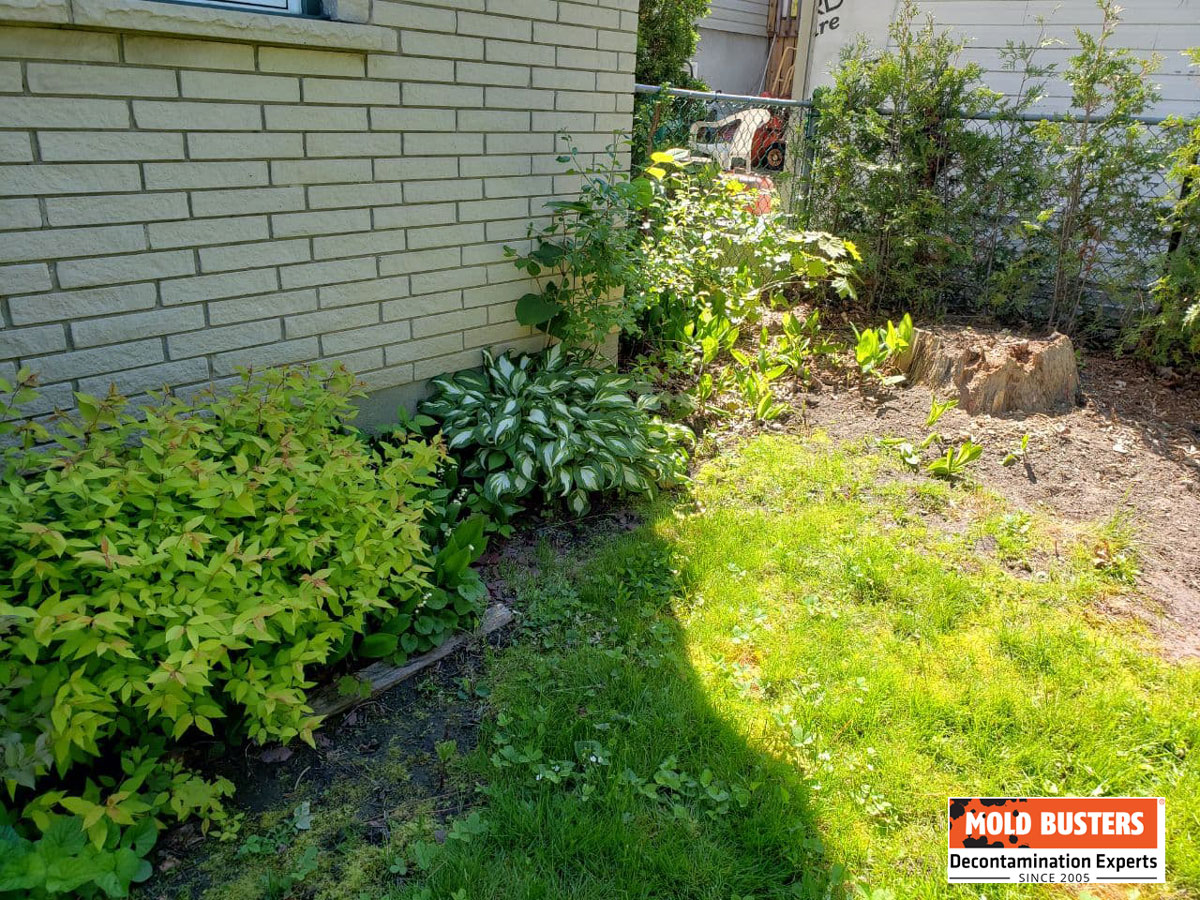
One of the major causes of mold on your outdoor soil is planting your vegetation without sufficient spacing. It prevents enough air circulation into the soil. Another cause is the winter or overwatering your garden, which can increase the moisture in the soil, thereby creating a conducive environment for mold to thrive.
Using organic fertilizer in your soil can also render it moldy. Fertilizer contains the necessary nutrients needed by the existing soil bacteria to develop into the typical white mold.
What Type of Mold Can Grow on Plant Soil?
The types of mold that can grow on your plant soil are classified by their color. The common ones are white, black, green, and brown powdery molds, respectively. Each type of mold has different species with dissimilar effects on your soil. But how would you differentiate each mold on your houseplant soil?
White Mold
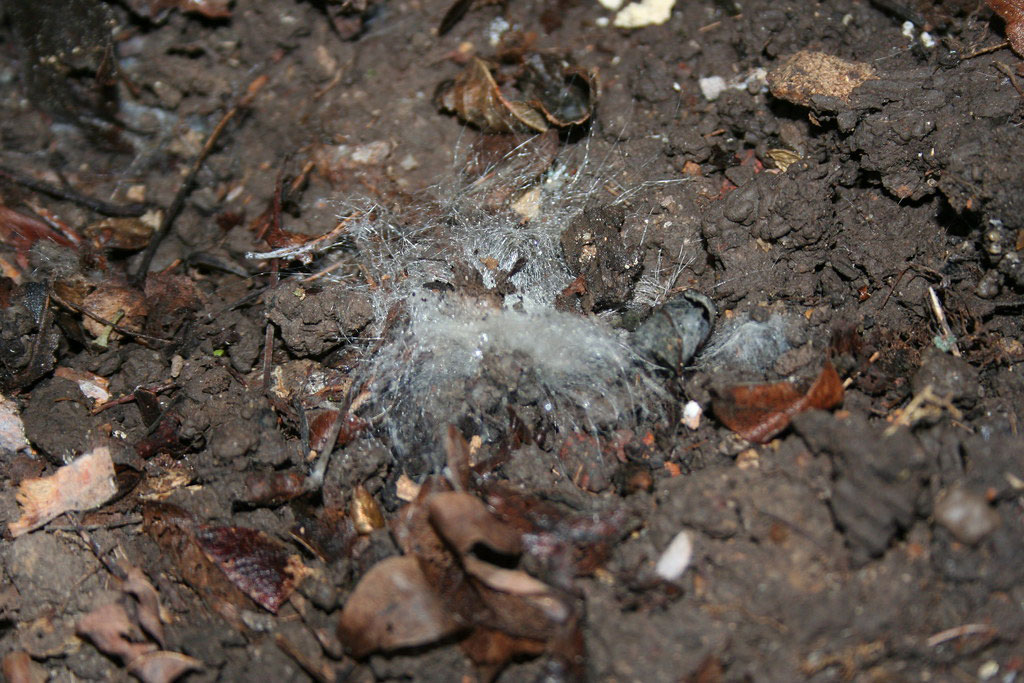
White mold is a saprophytic fungus frequently found growing on the soil and other areas such as wood-based surfaces. It is the most common of all mold types and can be identifiable by its white fuzzy look on the surface of your soil.
Saprophytic mold uses the carbon it obtains from organic matter to flourish. This mold comes in different forms, but the widespread include Mucor, Aspergillus sp., Penicillium sp., and Trichoderma sp.
Black Mold
Black mold is often invisible to the eyes and is sometimes used interchangeably with sooty mold. It becomes noticeable when it starts to attack the stems, leaves, or fruits of your plants.
As black mold spores spread, the fungi grow and produce soot-like dark mycelia. These can be large or small blotchy black masses that cover large parts of the stems and foliage of the plant.
Green Mold
Green mold is the natural green layer growing on the surface of your damp potting soil. Those found regularly on the indoor and outdoor soil are Penicillium, Aspergillus, and Cladosporium. They start becoming noticeable as they grow and expand on houseplant soil.
Brown Powdery Mold
Brown mold is another type of mold that you may not recognize on your soil. It becomes visible when it starts spreading to the leaves of the plant. Then, the leaves turn brown with a powdery sight on them.
Mold fungus prefers to feed on young, succulent growing leaves. It attacks leaf buds and other plant debris, making leaves curl and later drop. In some cases, mature leaves are not affected. Water, insects, and wind transmit spores from the infected plant to other nearby plants.
What Does Mold on Soil Looks Like?
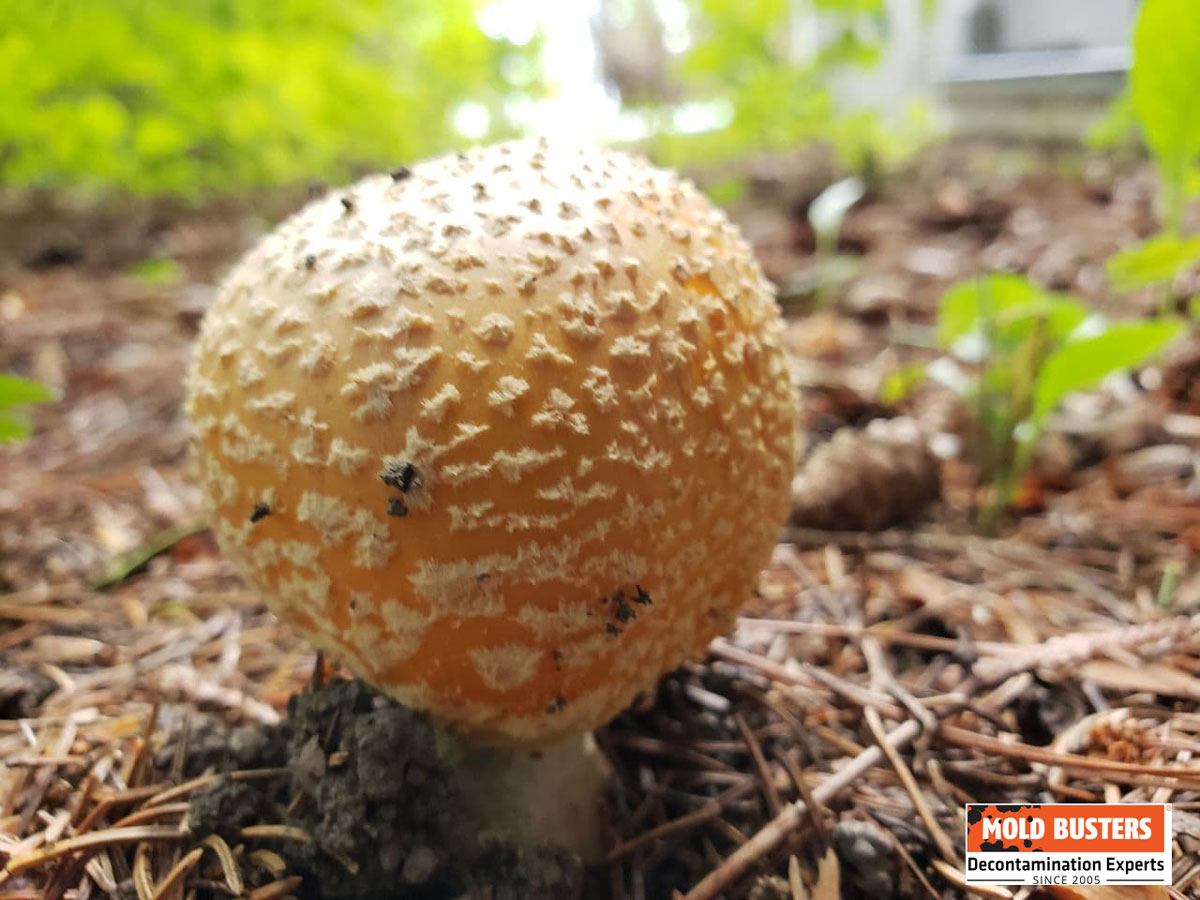
Sometimes, homeowners and gardeners don’t know what mold looks like on soil. White mold has a white fuzzy or woolly appearance on your soil, similar to the type you found on rotten food. Green mold appears as powdery shades of green.
Black mold can be identified as black sooty-looking or dark green patches on your soil and around the base of the plant. Brown powdery mold appears as tiny brown powdery spores, which become noticeable as the dusty look on the leaves of your plants. Both black and brown powdery mold can be hideous, so you may need to consult mold remediation professional for help.
Is Mold Dangerous on Your Soil?
The short answer is a ‘no’ and ‘yes’, depending on the mold type and how much it has grown. Mold fungi are not harmful to your plant soil at the early www as they also aid the growth of your plants. But as they develop, they can infect your plants and cause serious health issues if you don’t act fast to get rid of them.
The Harmful Effects of Mold on Your Soil and Plant
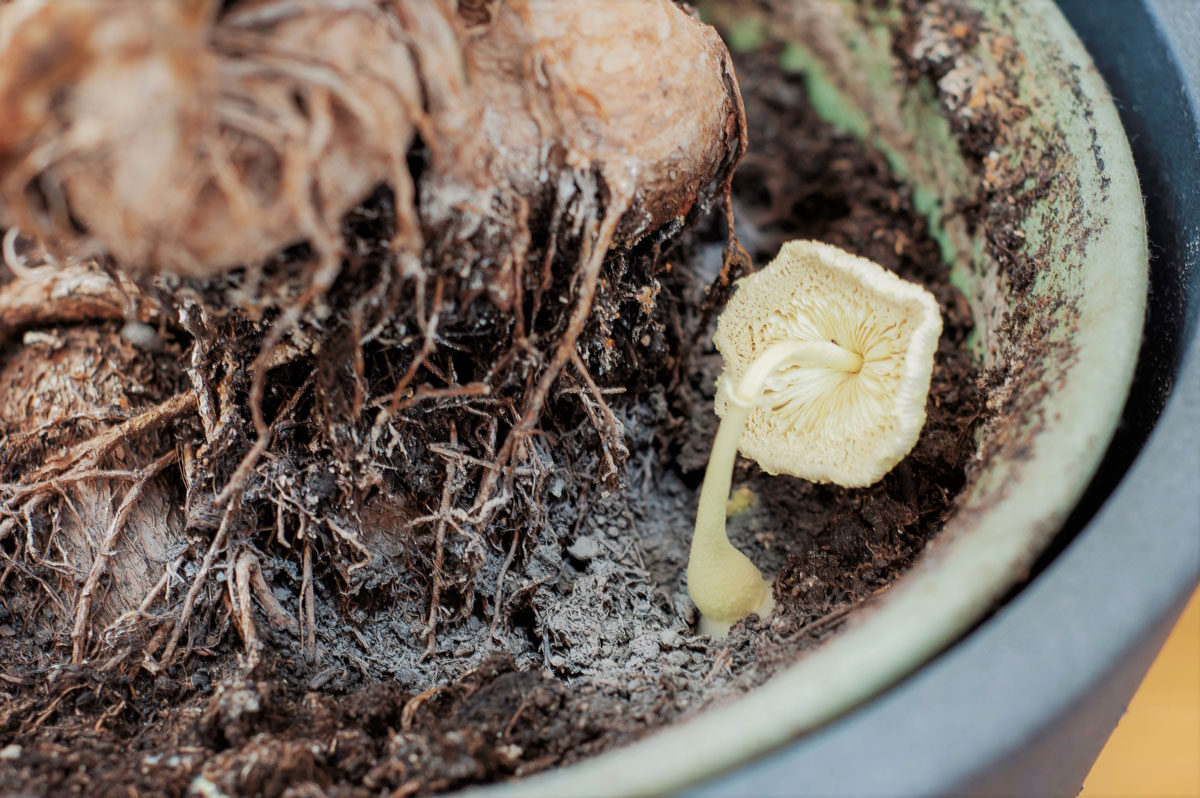
Whether you are seeing mold on your soil for the first time or you are a regular observer, you may be wondering if it is harmful to your soil and plants or not. Not all molds are dangerous, but you still need to stop the spread fast to keep your soil and houseplants in good health.
- White mold on your plant and soil is a harmless saprophyte. Even its presence in the soil is inevitable when it’s unsightly. But when it becomes visible, leaving it there to spread can lead to health problems. One of the potential problems associated with mold growth is to make your plant vulnerable to root rot.
- Similarly, saprophytic fungi in your soil can be an indication that your plant is not getting the right amount of airflow, moisture, and sunlight. It can also be a sign that the fungus is contending nutrition with your plant. So, you must pay immediate attention.
- Black mold growing on your plant soil should be a considerable concern to you. Although all black molds are not dangerous; however, harmless ones are rare under the right conditions.
- Stachybotrys chartarum is a dangerous type and can grow on planter rocks or leaves. Sometimes it appears as a dark green coloration. Consult a mold remediation specialist to find out the species of fungus growing on your soil and plant.
- Green mold growing on your soil and houseplants is toxic and has health risks. Aspergillus can trigger the onset of lung inflammation and pneumonia. It can also set off reactions like watery eyes, running nose, coughing, and itchy skin for people vulnerable to allergies and asthma.
- Another green mold genus that is dangerous is Cladosporium. It comprises around 40 species and usually comes in green, black, gray, and brown.
- Brown powdery mold on your soil can also lead to serious health risks. Consuming infected plants (such as cannabis) can lead to respiratory infections and lung diseases, which can be fatal to human health.
How to Identify Mold on Plant Soil
While certain mold types are visible, mold spores are generally microscopic fungi. The tiny, lightweight spores travel in the air, making you susceptible to mold infections. Identifying mold may not be as easy as most people claim.
The harmful effect of mold on your soil, plants, and even family is better imagined than experienced. Consulting a remediation company is your best bet.
Why Should You Contact a Remediation Professional?
- Not all white woolly and black discolorations are molds.
- Black or green mold can exist in your soil without you seeing it.
- Don’t risk the health of your plant soil and family before taking action.
- Only mold remediation companies have state-of-the-art mold testing tools.
So, only a remediation company can confirm if what you see is mold or just a look-alike. They are in the best position to tell what type of mold it is and how dangerous it can be on your plant, soil, and family.
Do you think you need help, Mold Busters is here to assist you. Our professionals will perform air quality tests to discover the state of the air you’re breathing in and the needs of your home.
If you’re in the Montreal or Ottawa area, our teams at Mold Busters are ready to assist you with comprehensive mold inspection and removal services.
We also offer a free virtual mold inspection service to help identify potential mold issues.
How to Prevent Mold Growth on Soil
If you observe mold on your soil or houseplants, take immediate action to prevent damages and health risks. Use the following tips to ward off mold growth on your soil and plants.
- Use healthy and disinfected soil when changing your soil and for all new plants. You can also use commercial potting soil because it contains enough nutrients for your plants.
- Moist conditions are favorable for mold growth, so avoid overwatering your plants.
- Remove dead leaves and other debris from the soil and clean dirt or dust from the leaves frequently. Besides, always remember to trim the lifeless parts of your houseplants.
- Ensure your plants are getting enough light and ventilation. Sunlight (or artificial light) is not only essential for your plant’s growth but also good at repelling mold. Also, use a source of ventilation to ensure airflow around the plants.
How to Get Rid of Mold on Soil
There are a few things you can do to eliminate mold from your soil and houseplants. This includes:
- Using a spoon to scrape off the white, fuzzy (or moldy) area of your soil, then discard it. Wear a dust mask to protect your health while removing it.
- Sprinkle anti-fungal solution into the soil after removing the mold. You may use either baking soda or cinnamon to prevent mold from reappearing on the soil.
- Use a damp cloth to wipe off any mold present on your plant. If you still notice mold on the leaves, cut them off.
But wait! Have you ever considered why there are certified mold remediation professionals? It’s because mold removal is professional, and it requires ‘technical know-how.’
Although, you can use the removal process stated above. But what about the contaminated air? Mold spores also spread through the air to areas where they are unsightly in your home. A mold remediation company will not only remove mold from your soil and plants but also makes sure that your family is in good conditions.
With that said, contact the best mold remediation experts near you now – call Mold Busters now!
Frequently Asked Questions (FAQs)
Why is there mold on my plant soil?
You are probably overwatering your plant or due to poor drainage and inadequate air circulation, which causes humid conditions that encourage mold growth.
Does cinnamon kill mold in soil?
Yes, cinnamon is a natural fungicide for getting rid of fungi in the soil but avoid sprinkling too much.
How to treat mold in plant soil?
You can use a spoon to scrape off the affected soil area. But when you consider your health risks, consulting a mold remediation professional is the best you can do.
Can you use potting soil that has mold in it?
No! Use healthy and sterilized potting soil only.

Get Special Gift: Industry-Standard Mold Removal Guidelines
Download the industry-standard guidelines that Mold Busters use in their own mold removal services, including news, tips and special offers:
"*" indicates required fields
Published: November 4, 2021 Updated: August 3, 2023

Written by:
John Ward
Account Executive
Mold Busters
Fact checked by:
Michael Golubev
CEO
Mold Busters
